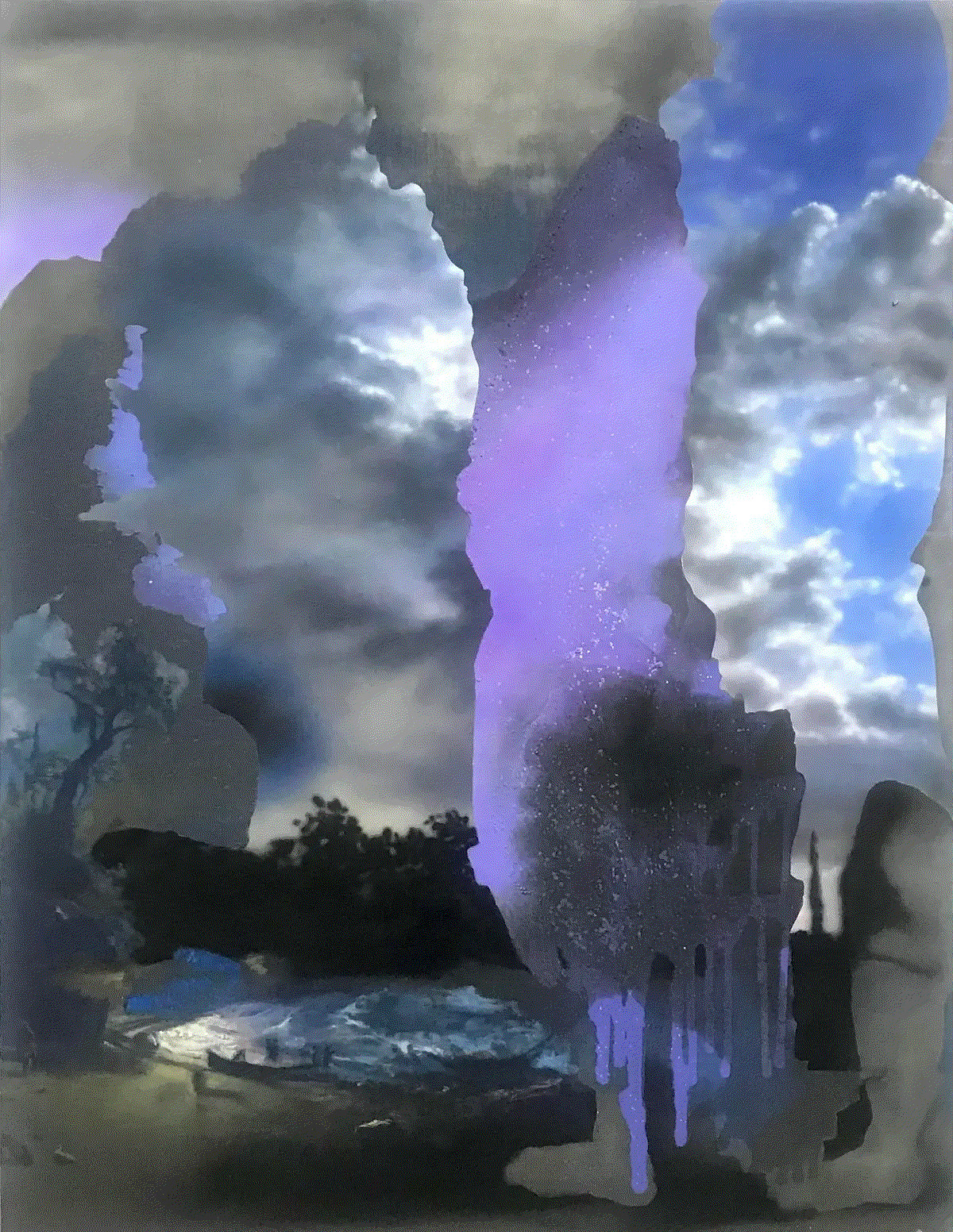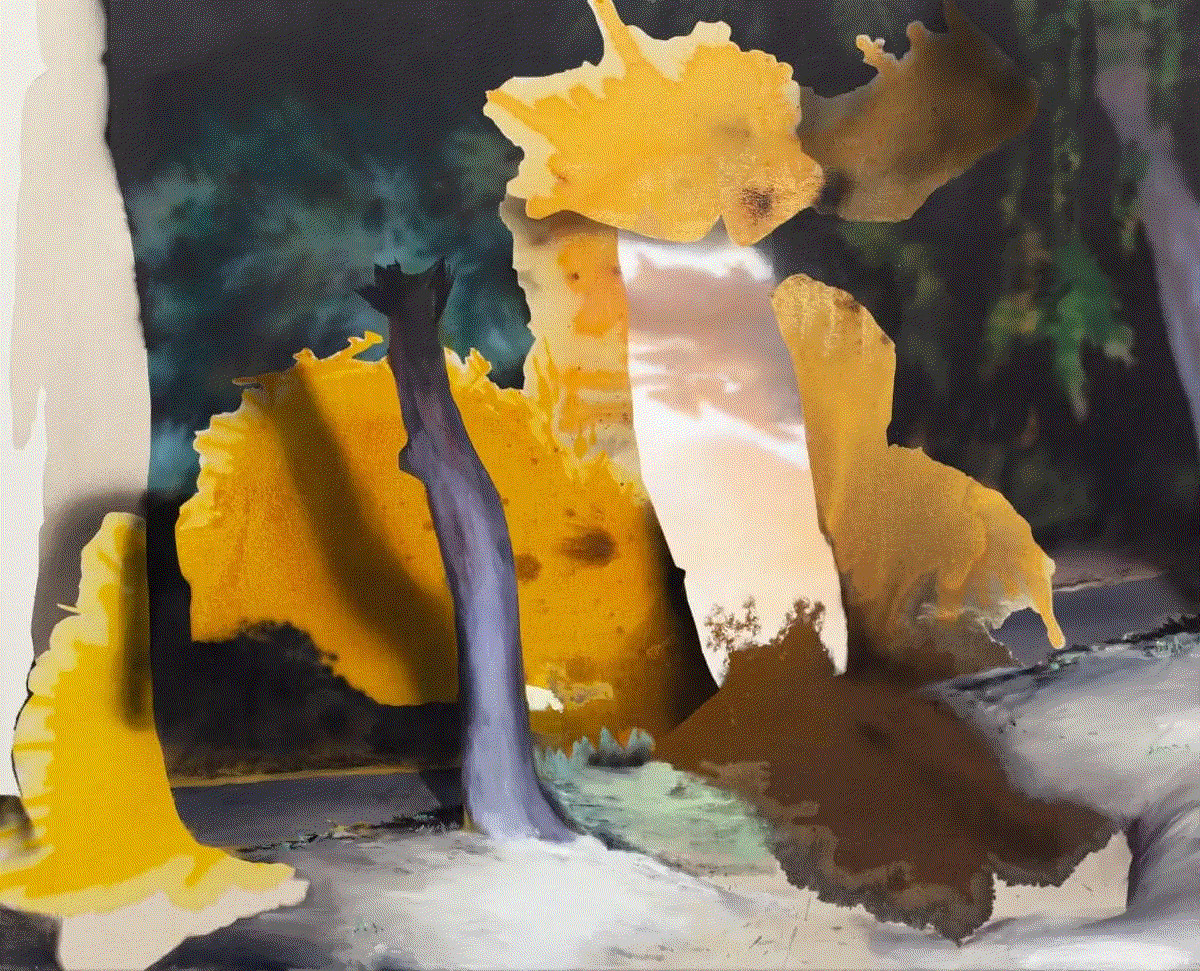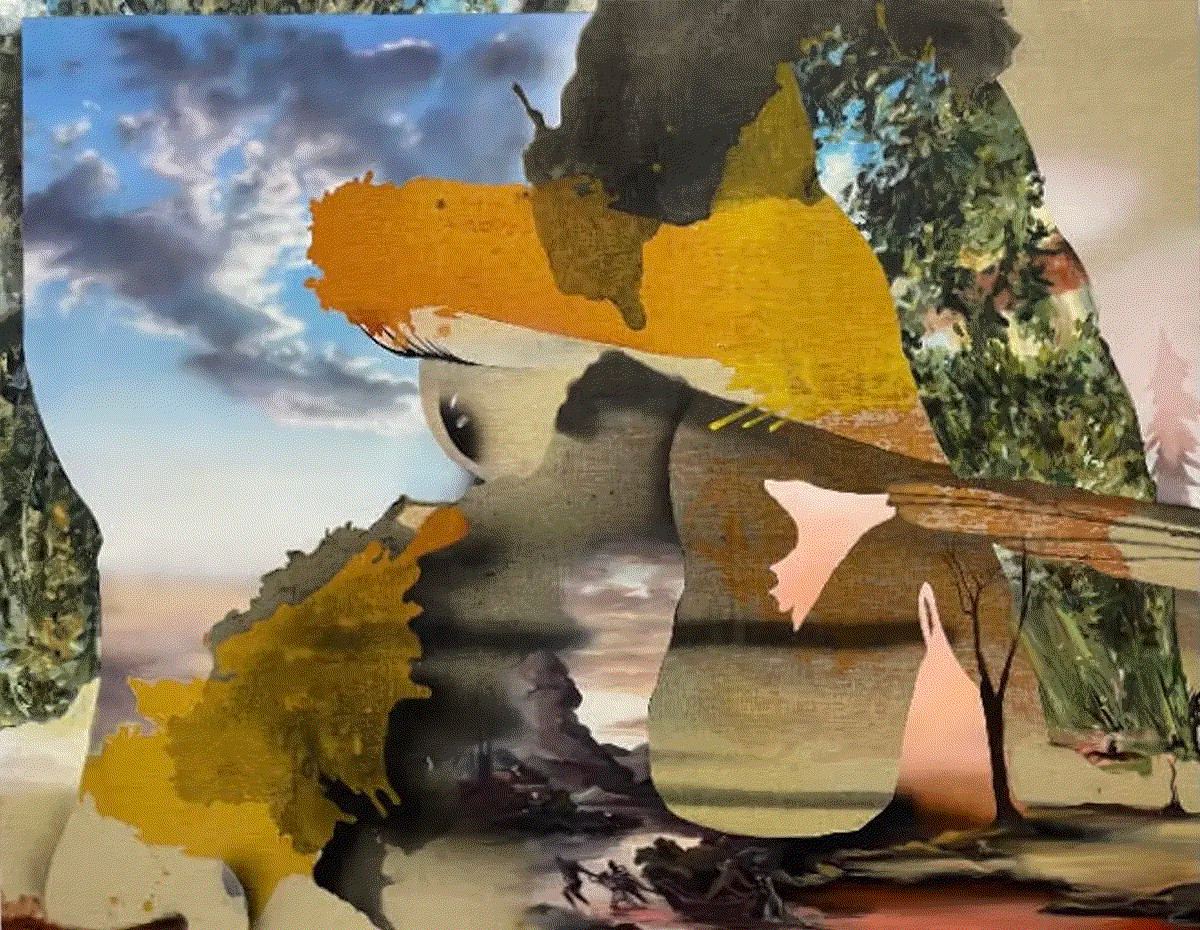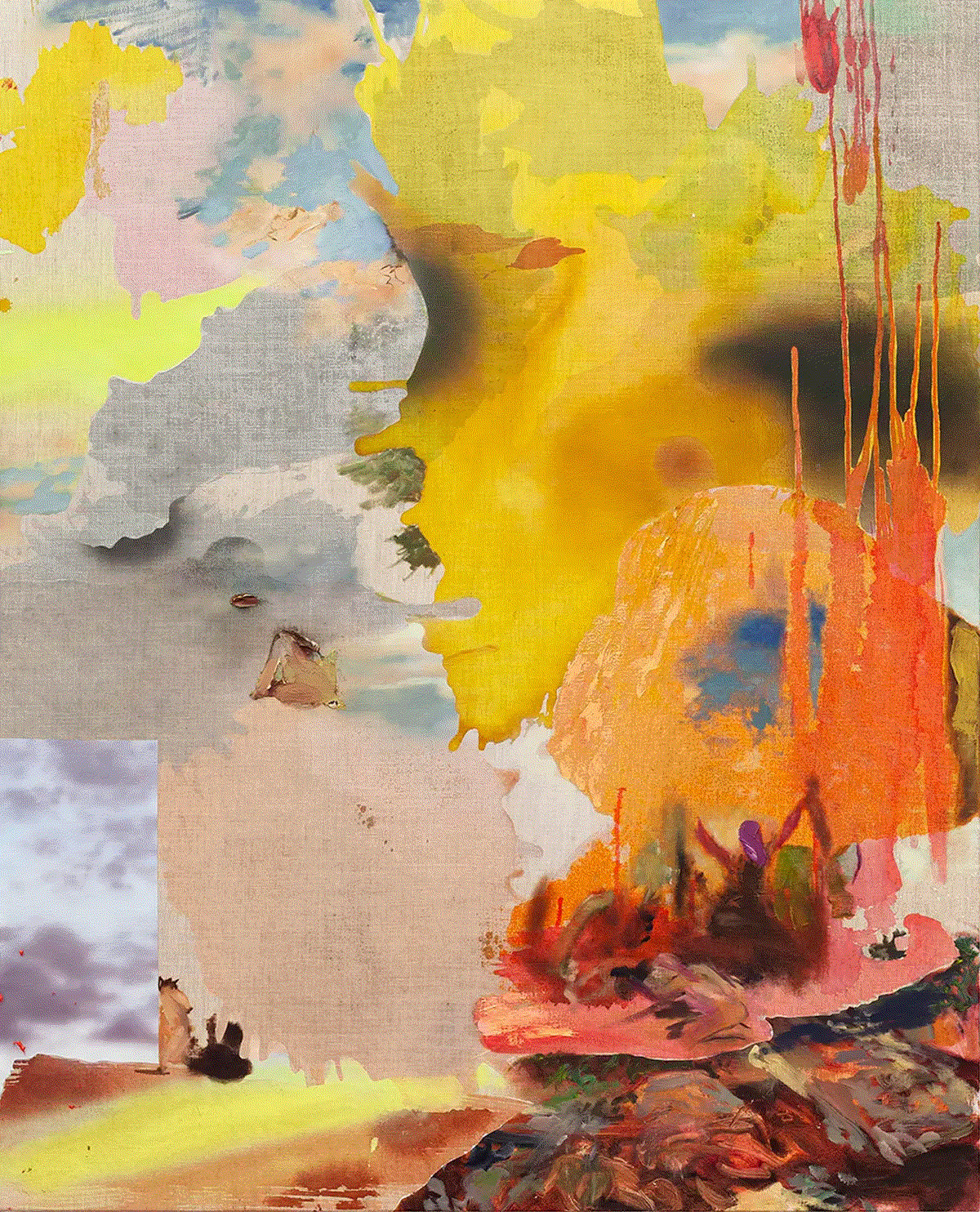
In Annie Lapin’s world, multiplicity reigns supreme. Crafting scenic landscapes that are both everyplace and no place, Lapin’s signature vistas blend the abstract and the representational, the imaginary and the concrete. To view Lapin’s work is to step into a realm that is always in question, always evolving, always expectant.
A native of Washington D.C., Lapin spent her formative years living in places ranging from Kentucky to Japan, and now resides in Los Angeles where she earned her MFA from UCLA. The imprints of these many worlds manifest in Lapin’s art, which asks viewers to make peace with contradiction, to find harmony in the disharmonious, and the particularities buried within the seemingly universal.
In the age of pandemic, where many of our realities have been drastically altered, or eliminated altogether, Lapin’s work takes on new resonance, inviting us to befriend our discomfort and dissonance, daring to find the beauty therein.
I sat down with Lapin to discuss the artist’s new collaboration with Spinelli Kilcollin, her unique gaze on the present moment, and its emergent artistic possibilities.
Donasia Tillery: I’m interested in what drew you to Spinelli Kilcollin and how you conceptualized the designs. One of the things I appreciate about your work is that it feels very dialectical. Even in these designs, there are these dark shadowy spaces and then there are these places that are very vibrant and teeming with life.
Annie Lapin: Yeah, I love that! Well I’ve known Dwyer for a long time, and we’ve always liked to dialogue artistically. And then we were talking about packaging. I had already been thinking a lot about fashion and textile design, about exactly what you were talking about: the dialect between materials and how they can work together even if they’re at odds, within a single piece. I was interested in applying that to something other than painting. I started to have a lot of ideas about how you could layer these different experiences in packaging. I was interested in this shifting between texture and experiences - to kind of give a depth and a cinematic experience through the package.
DT: I think it’s beautiful. Can you talk some about why you chose the colors you did and how you used them?
AL: Yeah, so the way I think about color is always in terms of landscape. Sometimes it’s about the actual landscape but a lot of the time, it’s about a mediated understanding of what the landscape is that we have because of media. And for me, the landscape is the space to understand ourselves, you know? Because it’s nature, it’s everything. It’s this mystical experience of the world, which we can forget when we’re dealing with the stuff we make ourselves. It’s this thing outside of ourselves. It’s mysterious. So the landscape for me is this never ending pot of mystery, of beauty. Unfortunately, it doesn’t really exist in a certain way. We’re always around our own manmade things. And that has its own excitement and humanist beauty, but for me, there’s this awe and mysticism in a landscape. There is something primal in our attempts to represent it.

What Lives in an Event?, 2021
DT: I love that you said it that way because that’s often my experience of perceiving landscapes. I’d be interested to hear about how cityscapes play into your aesthetic. I do think that one of the places where you link with Spinelli Kilcollin is an art practice that’s very much grounded in LA culture. I was looking at your Strange Little Beasts exhibition and there are these moments where I feel I’m in this technicolor, alternate reality with these very bright, dynamic hues. And then there are other times where I sense a very industrial feel. Has LA impacted that for you?
AL: Yes, I love this landscape situation but then the artifacts of humanity are really interesting to me. And trying to play with those two things to create something that’s both landscape and modernist concrete sculpture. There’s also the grid in my pieces. There’s always the up and down and the side to side. So that is related to urbanism. And also LA. LA is this technicolor, crazy fake world. (Gesturing to painting) These are totally fake. They have moments of naturalism but also, this is fake. And there’s something wonderful about that. Like LA with its facades and scenic history.

Night Opening, 2020
And then Spinelli Kilcollin has, I think, this mysticism and this kind of idea of the eternal connecting to stones that are a part of nature. These stones that they put into their rings are mystical in that they are nature. They’re a part of the earth. They have existed for eons. And I think there’s an interest in that in their work. Here’s this thing that’s grounded in the history of the earth. For me too, this work is trying to be contemporary. It’s talking about the facade of LA. But it’s also talking about the “what is the world?” questions. And they have this jewelry that’s beautiful and fashionable, which is surface. And then there’s this deep conversation about eternity, about the age of the stone and the symbol of the circle. So I think that that is the dialectic that you’re talking about. It’s cool and beautiful and modern. But then also ancient and timeless too. All of these things. So I love being able to contain multiple things. Which is maybe why the packaging is like blurry things, and weird landscapes, beautiful sunsets, and photographic styles.
DT: Yes! And speaking to the point about whatever reality is, for me, your work is so timely. Particularly, for me, coming to it in the pandemic. When I’m looking at it, my eye wants so badly to define a thing, to make it make sense. But then, when I choose to be present with that experience, it’s like, well where is the impetus to define it coming from? And why is that so important to me? I think a lot of people likely feel a similar thing, where you’re looking at this present reality and you want so badly to make it mean something. So I’m interested to hear more about how you utilize form and if that has at all shifted during this time when we’re all asking “what does anything mean?”
AL: That’s so nice of you to say it’s timely. I’ve always been interested in how the eye searches for meaning. I am interested in the ways that our minds want to tell stories. And some of those stories are totally wrong and bad. But I do believe that some stories are more positive and going to help the world. I am interested in making a painting that can make you aware of your own urge to tell a story. The mind wants to create a story and that’s definitely always been a part of my work. And for me, what the pandemic did with my work was to make pieces that would allow you to experience the world and the strangeness of the world. If you can’t go outside and be in the world, if you have to just be inside, how can I make something where you could look at this forever and have a different experience everyday? I wanted to make a comforting object for somebody. I can’t be in this expansive world but I want to create this expansive thing for them to have an expansive experience. And part of that is this interpretive constant questioning.

Oh Beautifil, 2021
DT: It’s so interesting how you put it - where you are creating a space that is in a certain way infinite, that you can step into it from different positionalities and experience something totally different. And in that way, I find that a lot of what you are accomplishing is questioning not only the reality of form but the reality of time. There’s no linear reality happening within the paintings. Especially now as people are getting vaccinated, there’s a lot of anticipation - nervousness and excitement - about the world as we understood it having ended and beginning again. Can you speak some on how you understand time and how that shows up for you aesthetically?
AL: I think about time all the time. I did want to mention what you said about excited and nervous. I feel like excited and nervous is a feeling that I inhabit very much. The world is terrifying. Things are kind of awful but there’s maybe a beauty and there’s possibility. And the work relates to that a lot. It’s almost an ecstatic feeling. It’s scary but beautiful. The world has so much terror and awfulness but there’s also this beautiful possibility.
I think of time almost like a palette and I’ve always felt like history is almost like a color. It’s like this thing that’s already there. It’s in our minds. Colors exist because they’re wavelengths and history exists because it happened. But it still is a part of our mind. And if you experience an image that’s connected to history, then you can maybe experience it as color, in a subconscious way. Maybe there are different ways to experience history that are not so verbal. That’s more like, what is the feeling I have from experiencing that history? So that’s one way I think about time. And then the other thing I think about is there is so much about the way that paint moves by itself when it’s just poured. And I want that kind of action. There is this record of the action of the paint which is like an accident. But then history also has this similarly incidental, accidental thing. So I try to have the historical and these accidents play off each other in the same reality, because I think they’re equal - in my mind.
DT: That really resonates, especially this idea of an accident that carries so much meaning and consequence. I do feel there’s a lot of thoughtfulness and intention behind what you’re doing. If you hope that people took any particular message away from seeing your work, what would it be?
AL: Well, this question makes me think about what I wish people would do so that the world would be better. I would love it if people could be like “I need to question my experience of reality more. I need to understand where it comes from.” And not be like “there is no reality.” I don’t want them to be nihilists. But I would like people to be like “oh, here’s my experience and I’m going to question that, no matter what.” Whoever you are. Everybody needs to question their experience. I wish people would do that and have this experience of something really beautiful, even the constructs of their own world. To be like “oh that’s a beautiful construct” but to also ask “what else is there? What’s beneath? What’s making this construct?”
DT: I think that is, in an ideal world, so much of our work as humans - to honor our own reality and the realities of other people and be curious about where those things are potentially at odds, where there are questions to be asked, and space for reassessment.
AL: Yeah, that would be my dream: to make a painting that can be the substitute for moving through the world. It’s this kind of magic. As a person who makes art, you do have to think of it like, I’m going to make this magic thing. This is what I want to do. I want it to unlock your experience.


